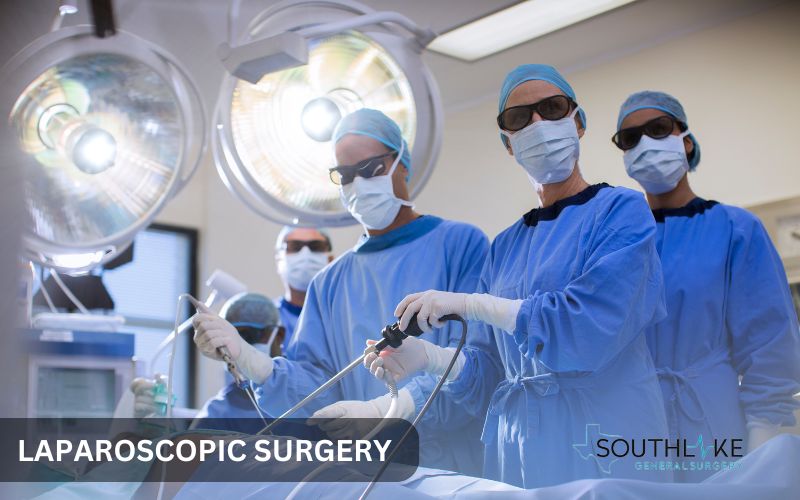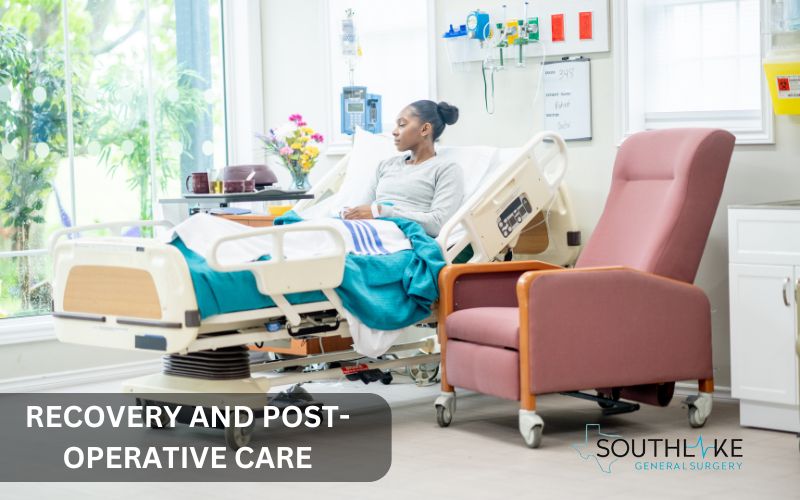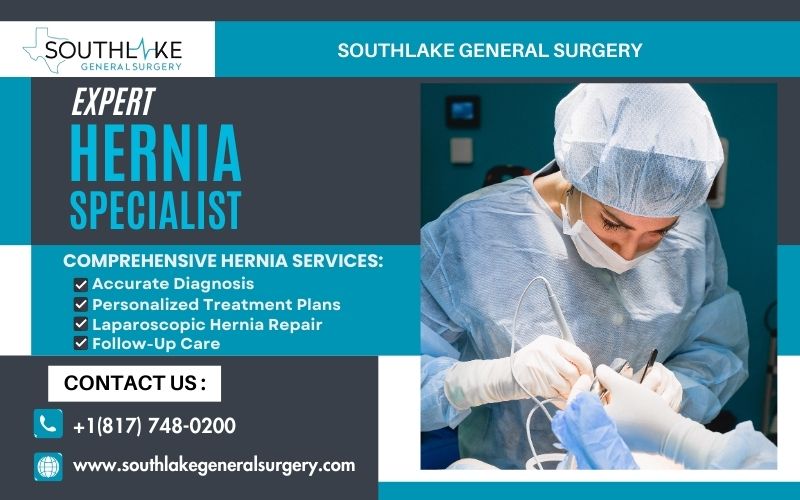Finding a “hernia specialist near me” is certainly essential, when you need a hernia repair. A skilled professional can precisely diagnose your condition. A personalized treatment plan will be created to align with your specific needs. This increases your chances for a full recovery after hernia surgery.
Key Highlights
- Finding a good hernia specialist is key to effective hernia treatment.
- Dr. Valeria Simone at Southlake General Surgery is a leading hernia specialist in Texas, USA. She covers many areas of hernia care.
- Dr. Simone and her team make personal treatment plans for each patient’s needs.
- Southlake General Surgery offers different treatment options, like minimally invasive procedures and robotic-assisted hernia repair.
- Dr. Simone’s skills and caring way help get good results and a positive experience for patients.
Understanding Hernias: A Comprehensive Guide

Hernias are quite common problems that often need surgical intervention. They can occur in people of all ages, young or old. Approximately 5 million people across the United States are affected by hernias, yet only 700,000 undergo surgical repair annually.
Although certain hernias may not have any symptoms, and they don’t require intervention. However, some individuals might hesitate to seek treatment due to concerns about the discomfort associated with surgical procedures.
Hernias can greatly impact your life and how you feel. Every individual needs to understand hernias such as what causes them, their symptoms, and the treatments that can help you. This insight can help you in making more informed decisions regarding your well-being.
Prompt evaluation and intervention are essential. It assists in preventing problems and maintaining your well-being effectively. Working with a specialist in hernias, such as Dr. Valeria Simone at Southlake General Surgery, can greatly enhance your experience and care for a hernia.
What You Need to Know About Hernias
A hernia occurs when an internal organ or tissue protrudes through a vulnerable area in the abdominal wall. You may notice a bulge, especially in the groin area. Hernias develop due to too much pressure in the abdomen and a weak abdominal wall.
Some things that can raise the risk of getting a hernia include being overweight, lifting heavy objects, chronic coughing, and constipation. Your family history could also be an important factor to consider. While some individuals may feel perfectly fine, others might experience pain and discomfort.
If you suspect you have a hernia, it’s important to see a trained healthcare provider. They can help evaluate your health and suggest the best possible treatment option. Getting help early can lower the chances of problems and help you heal better.
Common Types and Symptoms of Hernias
There are several types of hernias. The symptoms can be different based on where the hernia occurs and how serious it is.
Some common types of hernias are:
- Inguinal hernias: This category is the most prevalent, accounting for 75% of all hernia instances. They primarily impact individuals who are male or those designated male at birth. This occurs when a section of your intestine pushes through into the inguinal canal, which is a channel that extends along your inner thigh.
- Femoral hernia: It is a relatively rare form of groin hernia that develops in the femoral canal, located beneath the inguinal canal. The fat tissue might protrude.
- Umbilical hernias: An umbilical hernia happens when a portion of your intestine pushes through a gap in your abdominal wall close to your belly button. Many umbilical hernias are congenital, meaning they are present from birth. They are often seen in babies and pregnant women.
- Incisional hernia: An incisional hernia develops when tissue pushes through a previously made incision in the abdominal wall that has become weakened over time.
- Ventral hernias: It refers to a type of hernia that develops through the front wall of the abdomen. This encompasses both umbilical hernias and incisional hernias. An epigastric hernia refers to a type of ventral hernia that occurs just above the belly button.
Symptoms can be different for everyone. Common signs are a visible bump or swelling that may increase when you strain or cough. You might feel pain or discomfort in that area, especially if you bend over, lift something, or cough.
A heavy or dragging feeling in your belly can also happen. In serious situations, like if a hernia becomes trapped, you may feel strong pain, feel ill, have vomiting, and struggle to have a bowel movement.
Dr. Valeria Simone’s Approach to Hernia Care
Dr. Valeria Simone MD is a well-known hernia doctor based in Southlake Texas, USA. She truly cares about her patients. She puts in a lot of effort to ensure their safety and support their success.
Dr. Simone starts by carefully looking over each patient’s medical history. Next, she performs a comprehensive physical examination to understand their problems and worries.
Her commitment to providing personal care ensures that every patient receives a tailored treatment plan designed specifically for their needs. This approach to her work has helped her become a well-known and compassionate doctor. She puts in a lot of effort to get the best results for every patient.
Personalized Consultation and Diagnostic Process
At Southlake General Surgery, the care team focuses on the unique needs of each patient needing hernia treatment. Patients start by meeting privately with Dr. Simone.
She begins the meeting with patients by asking about their medical history. This also includes information on past surgeries, health problems, and current medications.
Next, she conducts a thorough physical exam to check the size, location, and various characteristics of the hernia. For accurate diagnosis, Dr. Simone may also suggest imaging tests like ultrasounds or CT scans. These tests can provide a clearer image of the hernia.
Dr. Simone can utilize this information to develop a personalized treatment plan for every patient. This plan will align with their distinct requirements and objectives.
When patients feel valued in their care, they feel more involved and confident in their health decisions. This engagement can lead to improved results and greater satisfaction with their treatment.
Innovative Treatment Options at Southlake General Surgery
Southlake General Surgery is dedicated to delivering the most advanced and effective surgical techniques available.
- Minimally invasive surgery (Laparoscopic Surgery): Surgeons often use this minimally invasive method for a standard hernia repair, resulting in small incision sizes, less pain, and a faster recovery process.
- Robotic hernia surgery: In robotic surgery for hernia repair, the surgeon operates the instruments from a computer interface, utilizing robotic appendages.
- Abdominal wall reconstruction: This approach is beneficial for large or complex hernias. The emphasis is on repairing and reinforcing the core structure of the abdomen.
Certain hernias need traditional open surgery and Dr. Simone is proficient in both open surgical techniques and more modern, minimally invasive approaches.
She can suggest the best option for each patient. She looks at key factors, such as how big and where the hernia is, and the patient’s health and way of living.
Why choose a Hernia surgeon at Southlake General Surgery, Texas, USA
Southlake General Surgery is a place you can trust. They provide the highest quality care to their patients. People recognize them for their aim to keep patients happy.
Dr. Valeria Simone leads the team. She is an experienced hernia surgeon. She works hard to learn and use the latest treatments. This helps make sure patients get the best care possible.
Choosing a good hernia surgeon, such as Dr. Simone, has many benefits. You get personal attention and new treatment options. There is also a better chance of success with fewer problems. If you want the best care for hernias, consider Southlake General Surgery as a great choice.
Hernia Repair Surgery Techniques
Hernia repair methods have improved a lot. Now, patients can choose from several options. In the past, the main choice was open surgery. Nowadays, many people like to go for laparoscopic surgery, also known as a minimally invasive method to repair their hernias.
However, the choice of method usually depends on factors like how large the hernia is and its location. It also relies on your health and the surgeon’s advice.
It is essential to consult with your surgeon about the treatment options and your doctor will be able to explain the benefits and risks of the surgery.
The Advantages of Laparoscopic Surgery

Laparoscopic surgery is a popular choice among individuals to repair hernias. It has certain advantages which can benefit a patient such as small incision and less post-operative pain, as compared to open surgery that includes one large incision and longer recovery time.
In laparoscopic surgery, the surgeon uses a thin tube with a camera, called a laparoscope that goes through a small incision. This allows the surgeon to get a clear view of the impacted area on a monitor. They also make other small incisions to put in special tools to repair the hernia.
Often, surgeons use a mesh during the surgery. Hernia mesh helps to make the weak spots in the abdominal wall stronger. This way, it reduces the possibility of hernia recurrence in the future.
Laparoscopic hernia repair is a good option compared to open surgery. It leads to fewer problems, like infections. Patients recover quickly and have smaller scars. Most people can go back to their daily activities in just a few weeks.
Open Hernia Surgery
Open surgery is a usual method to fix a hernia. This type of surgery requires a larger cut over the hernia. The surgeon can reach the hernia this way. They will then repair the weak spot in the abdominal muscles using stitches.
Open surgery is an excellent option for various types of hernias. This is especially true for large, complex, or recurrent hernias when smaller, less invasive methods can’t be used. In open surgery, doctors commonly use hernia meshes. These meshes make the repaired area stronger and help lower the chance of the hernia coming back.
Recovery time from open surgery is usually longer than from laparoscopic surgery. But now, new surgery methods and improved pain management have made the experience better for patients.
Preparing for Your Hernia Surgery
Getting ready for your hernia surgery is important. This can help the surgery go well. Make sure to follow your surgeon’s instructions. Attend all your pre-operative appointments. It’s also important to stick to any diet or medication guidelines they give you.
In case you have any questions or concerns, it is important to get in touch with your healthcare professional, they will be able to guide you during every step of the surgery process.
Pre-Surgery Checklist: Ensuring a Smooth Procedure
If you have scheduled the surgery, your healthcare provider will give you a pre-surgery checklist before your surgical procedure, just to ensure everything goes well. The checklist will include important steps that you need to follow, which may include:
- Medical Evaluation: Before your surgery, your doctor may suggest some important medical tests, like blood tests or a physical exam.
- Medication Review: If you’re taking any medicines, it is important you inform your doctor about all the current medications. Because your doctor might suggest changing some of the medicines before the surgery.
- Dietary Guidelines: Follow any specific diet rules. This may mean not eating for a short time before the operation.
You must plan for a means of transportation to take you home from the medical facility prior to the day of the procedure. After receiving general anesthesia, you will be unable to drive a vehicle.
What to Anticipate on the Surgery Day
It is going to be a big day for you, bringing you one step closer to a healthier and happier you. On this surgery day, you will go to the surgical center and check in at a pre-operative area.
Your doctor will review all the medical records to ensure everything is ready for the surgery. They are more than willing to assist you with any last questions you might have before the surgery. They also ensure you feel comfortable throughout and make you ready for the surgery.
Prior to the procedure, an anesthesiologist will have a conversation with you about the anesthesia that will be utilized during the process.
If you have any questions related to risks and benefits you can discuss with the anesthesiologist. When you feel ready and prepared, you will enter the operating room for the procedure.
After surgery, the doctor will shift you to the recovery room. The nurses and medical team will closely monitor your vital signs and pain to ensure your well-being.
Your surgeon will also give you post-surgery instructions which will cover how to care for your wound, which medications to take, and what activities to avoid. These instructions are really helpful for a smooth recovery after hernia surgery.
Recovery and Post-Operative Care

Most hernia repair procedures are usually performed on an outpatient basis, this allows the patient to return home on the same day after surgery. For more complicated hernia repairs, an overnight hospital stay of one or two nights may be necessary.
You will regain consciousness in a recovery room, where your healthcare team will keep a close watch on your vital signs. Usually, it requires a couple of hours to fully recover your consciousness after the administration of anesthesia.
You need to have someone to ride home safely and ensure you take complete rest to recover during the first 24 hours following the surgery. You should be able to do some basic activities, but it is important to approach the initial day with caution.
Essential Tips for a Speedy Recovery
Recovery time can vary for each person. But, these helpful tips can make your healing faster and easier:
- Follow Instructions: It is important to listen to your surgeon about how to care for your wound. Also, pay attention to the medicine they tell you to take and any activity limits.
- Manage Pain: Take the pain relief medicine your doctor gives you when you feel you need it. You can also use over-the-counter pain relief if it helps.
- Gradual Return: Start doing your daily activities again little by little. Do not lift heavy items or do tough tasks for a few weeks.
Your body needs time to feel better after surgery. Be patient and let yourself rest during this recovery time. If you feel anything strange or feel pain, contact your healthcare provider for help.
Managing Pain and Preventing Complications
Your surgeon will create a pain management plan just for you after your surgery. This plan might include some medicine and other methods to ease your pain, like using ice packs. These steps will help reduce discomfort while you recover in the beginning.
Knowing about possible issues and taking steps to prevent them can help you heal better. A common worry is hernia recurrence. To reduce this risk, stay away from heavy lifting or straining. It is also important to maintain a healthy weight and carefully follow your surgeon’s post-surgery instructions.
It’s essential to monitor any signs of infection to prevent its recurrence. Look out for more redness, swelling, warmth, or drainage at the incision site. If you observe any of these signs, please reach out to your healthcare provider as soon as possible. Also, be careful about any fever or chills.
Conclusion
If you need a good hernia doctor nearby, visit Dr. Valeria Simone, MD, at Southlake General Surgery in Texas, USA. She really cares about giving the highest quality care.
Dr. Simone uses advanced techniques like laparoscopic hernia repair surgery and other gentle treatments. Her experience in abdominal wall reconstruction helps her to give care that meets your needs.
Don’t let a hernia hold you back. Call +1 (817) 748-0200 to book an appointment for complete care and a quicker recovery. You can trust Dr. Simone and her team for hernia repair that puts your health first.
Frequently Asked Questions
How do I know if I have a hernia?
A hernia usually shows up as a bump in the groin area or near the incision site. Some activities, such as coughing, bending over, or lifting heavy objects, could cause you pain or discomfort. If you observe any of these signs, it’s a good idea to consult with a doctor.
What are the signs that surgery is necessary for a hernia?
If your hernia symptoms get worse or do not get better, doctors usually suggest surgery. This is especially important if the hernia causes severe pain, gets bigger, or if there are worries about problems from the weak spot in your abdominal wall. The type of hernia and how serious it is will also help decide if you need surgery.
Medically Reviewed By: Dr. Valeria Simone MD
Board-certified General Surgeon at Southlake General Surgery, Texas, USA.
Follow us on Facebook and YouTube.
References:
- Hernia: MedlinePlus Medical Encyclopedia. (n.d.). https://medlineplus.gov/ency/article/000960.htm
- Velmahos, G. C. (2012). Direct and Recurrent Inguinal Hernias Are Associated with Ventral Hernia Repair: A Database Study. World Journal of Surgery, 37(2), 312. https://doi.org/10.1007/s00268-012-1883-7
- Hernia – Symptoms & Types of Hernia Surgery | Made for This Moment. (n.d.). Made for This Moment | Anesthesia, Pain Management & Surgery. https://www.asahq.org/madeforthismoment/preparing-for-surgery/procedures/hernia-surgery/
- Haladu, N., Alabi, A., Brazzelli, M., Imamura, M., Ahmed, I., Ramsay, G., & Scott, N. W. (2022). Open versus laparoscopic repair of inguinal hernia: an overview of systematic reviews of randomised controlled trials. Surgical Endoscopy, 36(7), 4685–4700. https://doi.org/10.1007/s00464-022-09161-6

